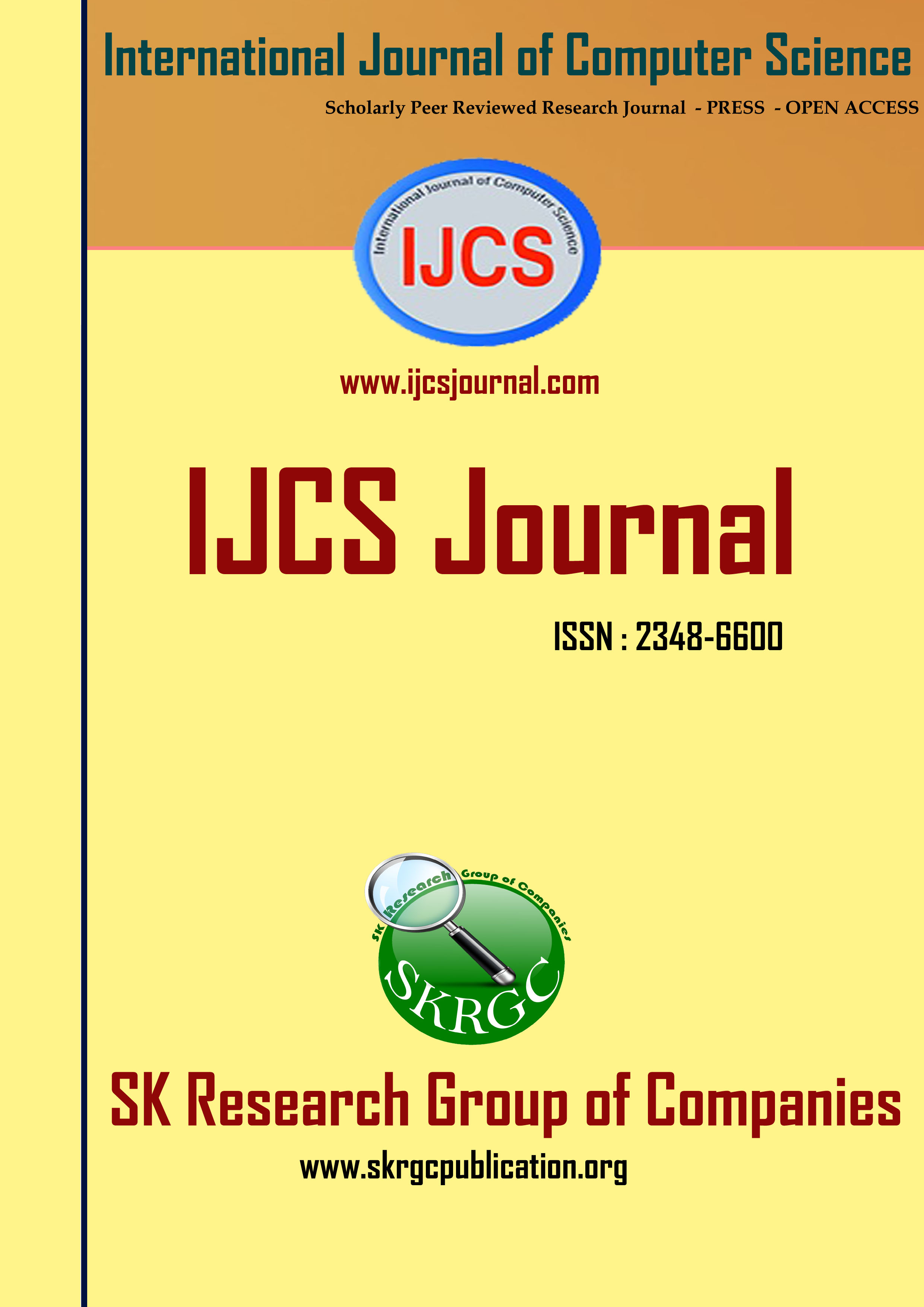An Overview of Opportunities and Challenges of 5G in IoT
International Journal of Computer Science (IJCS) Published by SK Research Group of Companies (SKRGC)
Download this PDF format
Abstract
The internet of things (IoT) and the applications it enables revolve around communication Technology. This paper discusses the characteristics and issues associated with Internet of Things (IoT) devices. Examine the numerous challenges, issues, and questions that arise during the research and design stages and conclude that meeting the anticipated high-traffic demands and low-latency requirements of the Internet of Things (IoT) and device-to-device (D2D) communications will require radical changes to the network paradigm. These include utilizing the millimeter-wave band for dense small cell deployment. Future wireless systems will incorporate a plethora of sophisticated features and applications, enabling 5G to become the most intelligent and dominant wireless technology to date. 5G technology, which enables faster data transmission, is an intriguing new technology that will be employed in the future. The widespread use of 5G, a new generation of wireless technology. As a result, 5G offers increased capability over 1G, 2G, 3G, and 4G. Since it is based on the advantages and drawbacks of 5G, the Internet of Things device has more credibility and legitimacy.
References
[1] Godfrey Anuga Akpakwu, Bruno J. Silva, Gerhard P. Hancke, and Adnan M. Abu-Mahfouz. A survey on 5g networks for the internet of things: Communication technologies and challenges. IEEE Access, 6:3619–3647, 2018.
[2] Debabani Choudhury. 5g wireless and millimeter wave technology evolution: An overview. In 2015, IEEE MTT-S International Microwave Symposium pages 1–4. IEEE, 2015.
[3] Gabor Fodor and S Sorrentino. D2d communications?–what part will it play in 5g? Verkkoaineisto Ericsson https://www. Ericsson. Com/research blog/device-device-communications/ Paivitetty¨ , 6:2014, 2014.
[4] GODFREY ANUGA AKPAKWU, BRUNO J. SILVA1, GERHARD P. HANCKE1, 3, AND ADNAN M. ABU-MAHFOUZA Survey on 5G Networks for the Internet of Things: Communication Technologies and Challenges, IEEE access, 2017.https://hillnotes.ca/2020/02/13/5g-technology-opportunities-challenges-and-risks/2020
[5] 5G Americas, ‘‘LTE and 5G technologies enabling the Internet of Things,’’ 5G Amer., Bellevue, WA, USA, White Paper, Dec. 2016. [Online]. Available: htpp://www.5gamericas.org/files/3514/8121/4832/ bling__IoT_WP_12.8.16_FINAL.pdf.
[6] Mariana-Daniela Gonzalez-Zamar,´ Luis Ortiz Jimenez,´ Adoracion´ Sanchez Ayala, and Emilio AbadSegura.´ The impact of the university classroom on managing the socio-educational well-being: A global study. International journal of environmental research and public health, 17(3):931, 2020.
[7] Chong Han, Josep Miquel Jornet, Etimad Fadel, and Ian F Akyildiz. A cross-layer communication module for the internet of things. Computer Networks, 57(3):622–633, 2013.
[8] Yaser Khamayseh, Abdulraheem Bader, Wail Mardini, and Muneer Bani Yasein. A new protocol for detecting black hole nodes in ad hoc networks. International Journal of Communication Networks and Information Security, 3(1):36, 2011.
[9] Mamoun Qasem, Hussien Altawssi, Muneer Bani Yassien, and Ahmed AlDubai. Performance evaluation of rpl objective functions. In 2015 IEEE International Conference on Computer and Information Technology; Ubiquitous Computing and Communications; Dependable, Autonomic and Secure Computing; Pervasive Intelligence and Computing, pages 1606–1613. IEEE, 2015.
[10] T. M. Hewa, A. Kalla, A. Nag, M. E. Ylianttila, and M. Liyanage, "Blockchain for 5G and IoT: Opportunities and Challenges," 2020 IEEE Eighth International Conference on Communications and Networking (ComNet), 2020, pp. 1-8, doi: 10.1109/ComNet47917.2020.9306082.
[11] N. Al-Falahy and O. Y. Alani, "Technologies for 5G Networks: Challenges and Opportunities," in IT Professional, vol. 19, no. 1, pp. 12-20, Jan.-Feb. 2017, doi: 10.1109/MITP.2017.9.
[12] S. Chen and J. Zhao, “The Requirements, Challenges, and Technologies for 5G of Terrestrial Mobile Telecommunication,” IEEE Comm. Magazine, vol. 52, no. 5, 2014, pp. 36–43.
[13] 5G: What Is It? White paper, Ericsson, 2014, pp. 1–10.
[14] J. Boyd, “Fujitsu Makes a Terahertz Receiver Small Enough for a Smartphone,” IEEE Spectrum, 6 Oct. 2015;
[15]https://spectrum.ieee.org/tech-talk/telecom/wireless/fujitsu-makes-a-terahertz-receiver-small-enoughfor-a-smartphone.
[16] F. Boccardi et al., “Five Disruptive Technology Directions for 5G,” IEEE Comm. Magazine, vol. 52, no. 2, 2014, pp. 74–80.5.
[17] J.G. Andrews et al., “What Will 5G Be?” IEEE J. Selected Areas in Comm., vol. 32, no. 6, 2014, pp.1065–1082.6.
[18] P.K. Agyapong et al., “Design Considerations for a 5G Network Architecture,” IEEE Comm. Magazine, vol.52, no. 11, 2014, pp. 65–75.7.[19] F. Khan and Z. Pi, “An Introduction to Millimeter Wave Mobile Broadband Systems,” IEEE Comm. Magazine, vol. 59, no. 6, 2011, pp. 101–107.
[20] J. Gozalvez, “Samsung Electronics Sets 5G Speed Record at 7.5 Gb/s,” IEEE Vehicular Technology Magazine, Mar. 2015, pp. 12–16.
[21] R.S. Sapakal and S.S. Kadam, “5G Mobile Technology,” Int’l J. Advanced Research in Computer Eng. and Technology, vol. 2, no. 2, 2013, pp. 568–571.
Keywords
5G, MIMO, IOT, mm-wave, non-orthogonal

